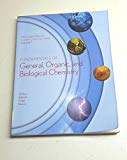
Fundamentals of General, Organic and Biological Chemistry Volume 1, 5th custom edition for Spokane Community College
1st Edition
ISBN: 9781323562789
Author: John McMurry, David Ballantine, Carl Hoeger
Publisher: Pearson Education
expand_more
expand_more
format_list_bulleted
Question
Chapter 24.7, Problem 24.5CIAP
Interpretation Introduction
Interpretation:
The factor which contributes to the storage of excess energy as triacylglycerols should be determined.
Concept introduction:
Triacylglycerides consisting of three molecules of fatty acids bound with one molecules of glycerol; a neutral fat that is the usual storage form of lipids in animals.
Adipose tissue protects, insulates, and stores fat in droplet inside the cells.
Lipids are insoluble organic compounds that consist of fat and oil. The chemical composition of these molecules includes hydrogen, carbon and oxygen.
Expert Solution & Answer
Want to see the full answer?
Check out a sample textbook solution
Students have asked these similar questions
What factors contribute to storage of excess energy as triacylglycerols?
Why are thioesters considered high-energycompounds?
what is the physiologic significance of triglycerides?
Chapter 24 Solutions
Fundamentals of General, Organic and Biological Chemistry Volume 1, 5th custom edition for Spokane Community College
Ch. 24.1 - Prob. 24.1KCPCh. 24.3 - Prob. 24.2PCh. 24.3 - Prob. 24.3PCh. 24.5 - Prob. 24.4KCPCh. 24.5 - Prob. 24.5PCh. 24.5 - Prob. 24.6PCh. 24.5 - How much energy is released as ATP from the...Ch. 24.6 - Prob. 24.1CIAPCh. 24.6 - Prob. 24.2CIAPCh. 24.6 - Prob. 24.3CIAP
Ch. 24.6 - Prob. 24.8PCh. 24.6 - Prob. 24.9PCh. 24.7 - Prob. 24.4CIAPCh. 24.7 - Prob. 24.5CIAPCh. 24.7 - Prob. 24.6CIAPCh. 24.7 - What is atherosclerosis?Ch. 24.7 - Prob. 24.8CIAPCh. 24 - Oxygen is not a reactant in the oxidation of...Ch. 24 - Prob. 24.12UKCCh. 24 - Prob. 24.13UKCCh. 24 - Prob. 24.14UKCCh. 24 - Prob. 24.15UKCCh. 24 - Prob. 24.16UKCCh. 24 - Prob. 24.17UKCCh. 24 - Prob. 24.18UKCCh. 24 - Prob. 24.19APCh. 24 - Prob. 24.20APCh. 24 - Prob. 24.21APCh. 24 - Prob. 24.22APCh. 24 - Prob. 24.23APCh. 24 - Prob. 24.24APCh. 24 - Prob. 24.25APCh. 24 - Prob. 24.26APCh. 24 - Prob. 24.27APCh. 24 - Prob. 24.28APCh. 24 - Prob. 24.29APCh. 24 - Prob. 24.30APCh. 24 - Prob. 24.33APCh. 24 - Prob. 24.34APCh. 24 - Prob. 24.35APCh. 24 - Prob. 24.36APCh. 24 - Prob. 24.37APCh. 24 - Prob. 24.38APCh. 24 - Prob. 24.39APCh. 24 - Prob. 24.40APCh. 24 - Prob. 24.41APCh. 24 - Prob. 24.42APCh. 24 - Prob. 24.43APCh. 24 - Prob. 24.44APCh. 24 - Prob. 24.45APCh. 24 - Prob. 24.46APCh. 24 - Prob. 24.47APCh. 24 - Prob. 24.48APCh. 24 - Prob. 24.49APCh. 24 - Prob. 24.50APCh. 24 - Prob. 24.51APCh. 24 - Prob. 24.52APCh. 24 - Prob. 24.53APCh. 24 - Individuals suffering from ketoacidosis have...Ch. 24 - Prob. 24.55APCh. 24 - Prob. 24.56APCh. 24 - Prob. 24.57APCh. 24 - Prob. 24.58APCh. 24 - Why are fatty acids generally composed of an even...Ch. 24 - Prob. 24.60APCh. 24 - Prob. 24.62APCh. 24 - Prob. 24.63APCh. 24 - Prob. 24.64CPCh. 24 - Prob. 24.66CPCh. 24 - Prob. 24.67CPCh. 24 - Prob. 24.68CPCh. 24 - Prob. 24.70GPCh. 24 - In the synthesis of cholesterol, acetyl-CoA is...Ch. 24 - Prob. 24.72GP
Knowledge Booster
Similar questions
- How many ATPs are synthesized when glycerol is metabolized to ethanol?arrow_forwardHow is the ability to store glucose as glycogen related to the general principle of physiology that physiological processes require the transfer and balance of matter and energy?arrow_forwardWhat enzymes metabolize glycerol?arrow_forward
arrow_back_ios
arrow_forward_ios
Recommended textbooks for you
 Human Physiology: From Cells to Systems (MindTap ...BiologyISBN:9781285866932Author:Lauralee SherwoodPublisher:Cengage Learning
Human Physiology: From Cells to Systems (MindTap ...BiologyISBN:9781285866932Author:Lauralee SherwoodPublisher:Cengage Learning

Human Physiology: From Cells to Systems (MindTap ...
Biology
ISBN:9781285866932
Author:Lauralee Sherwood
Publisher:Cengage Learning
